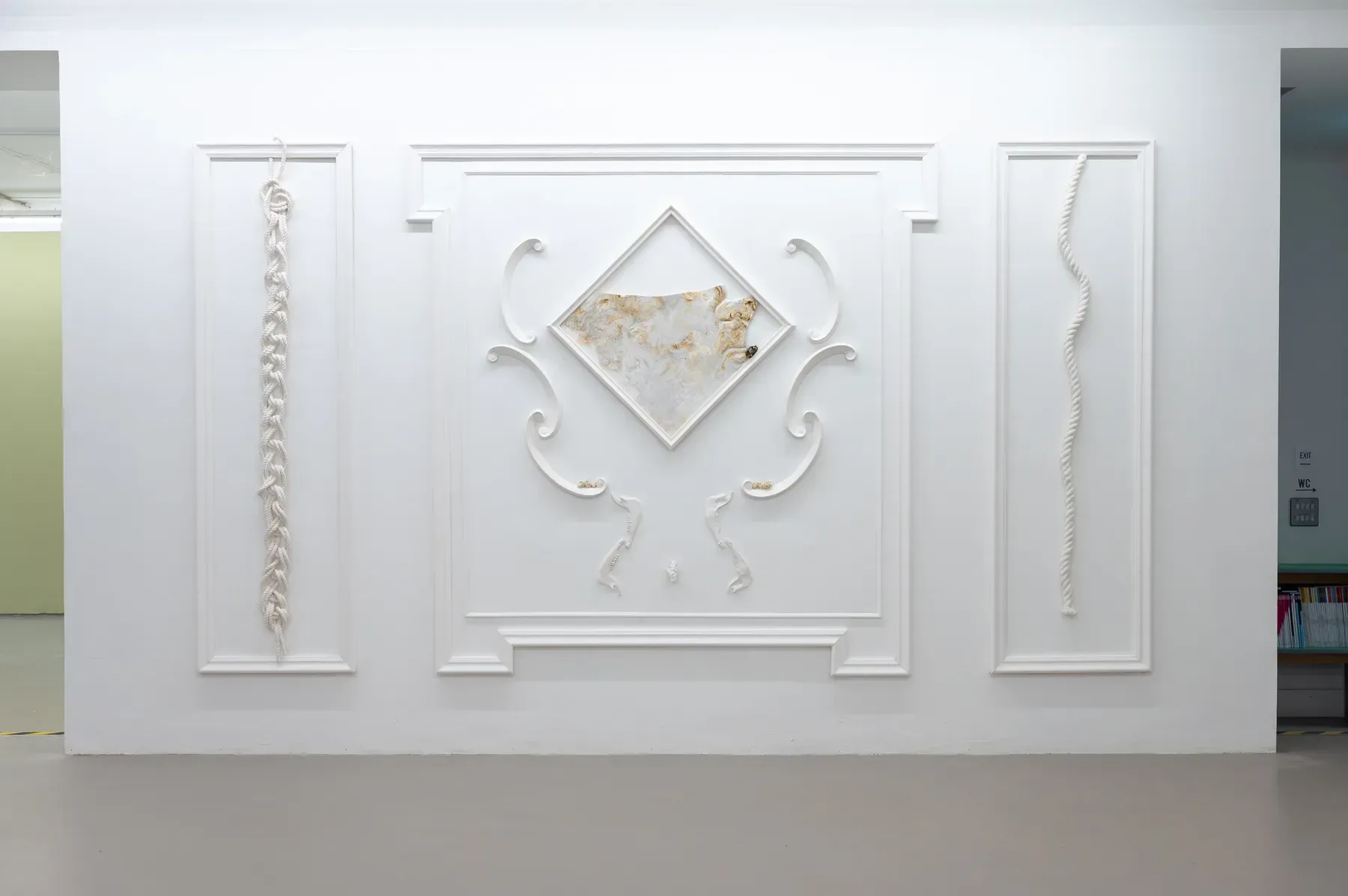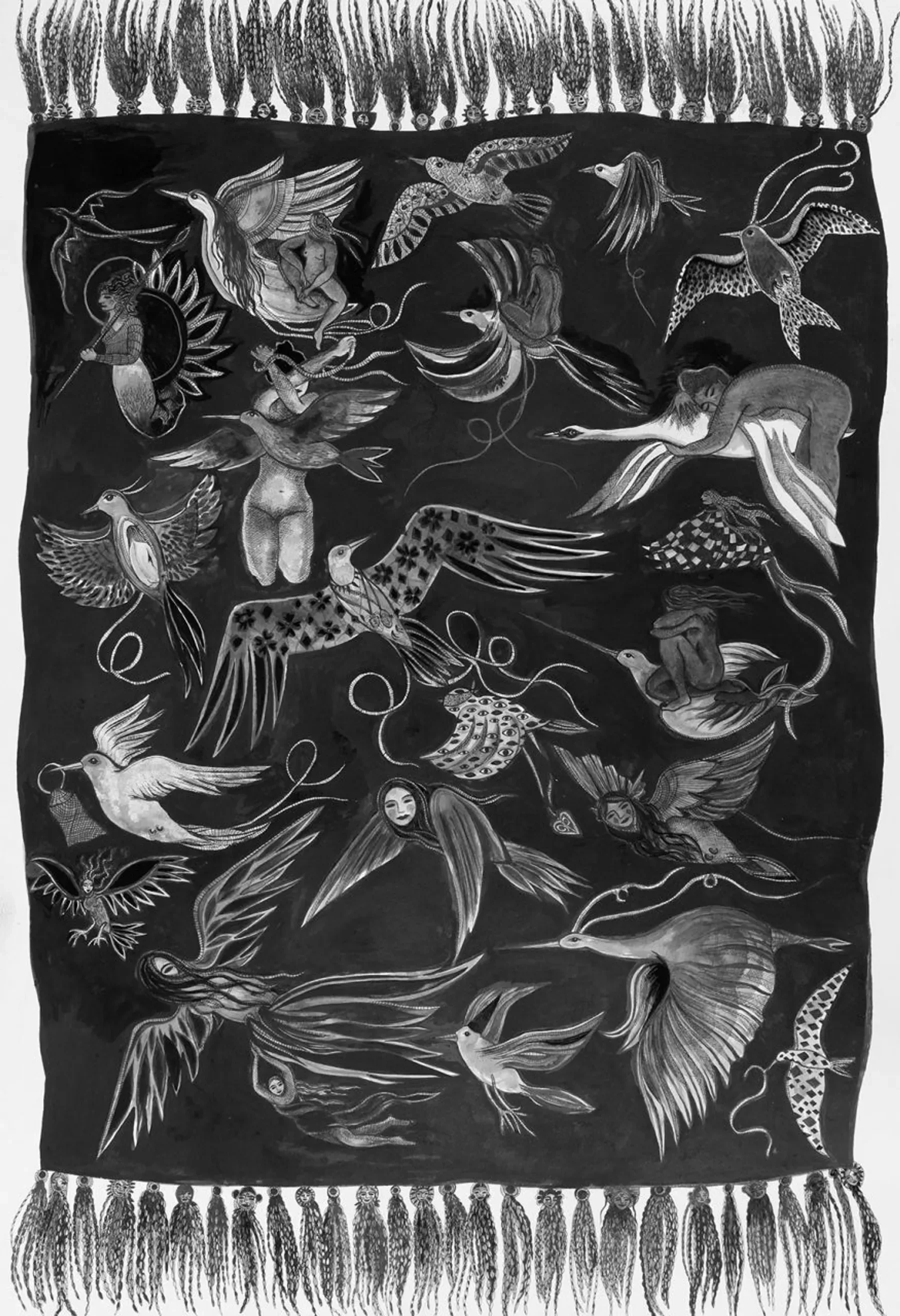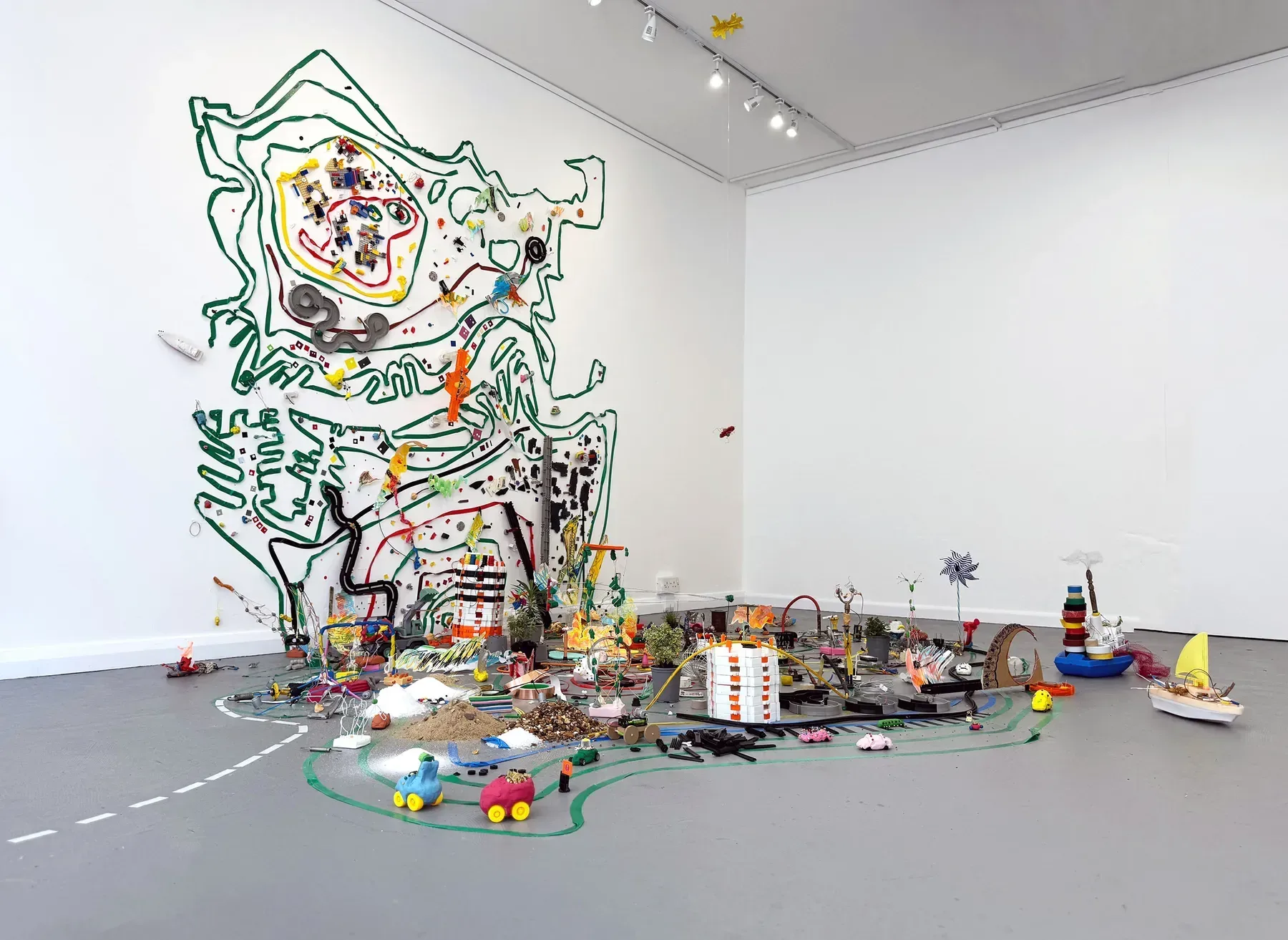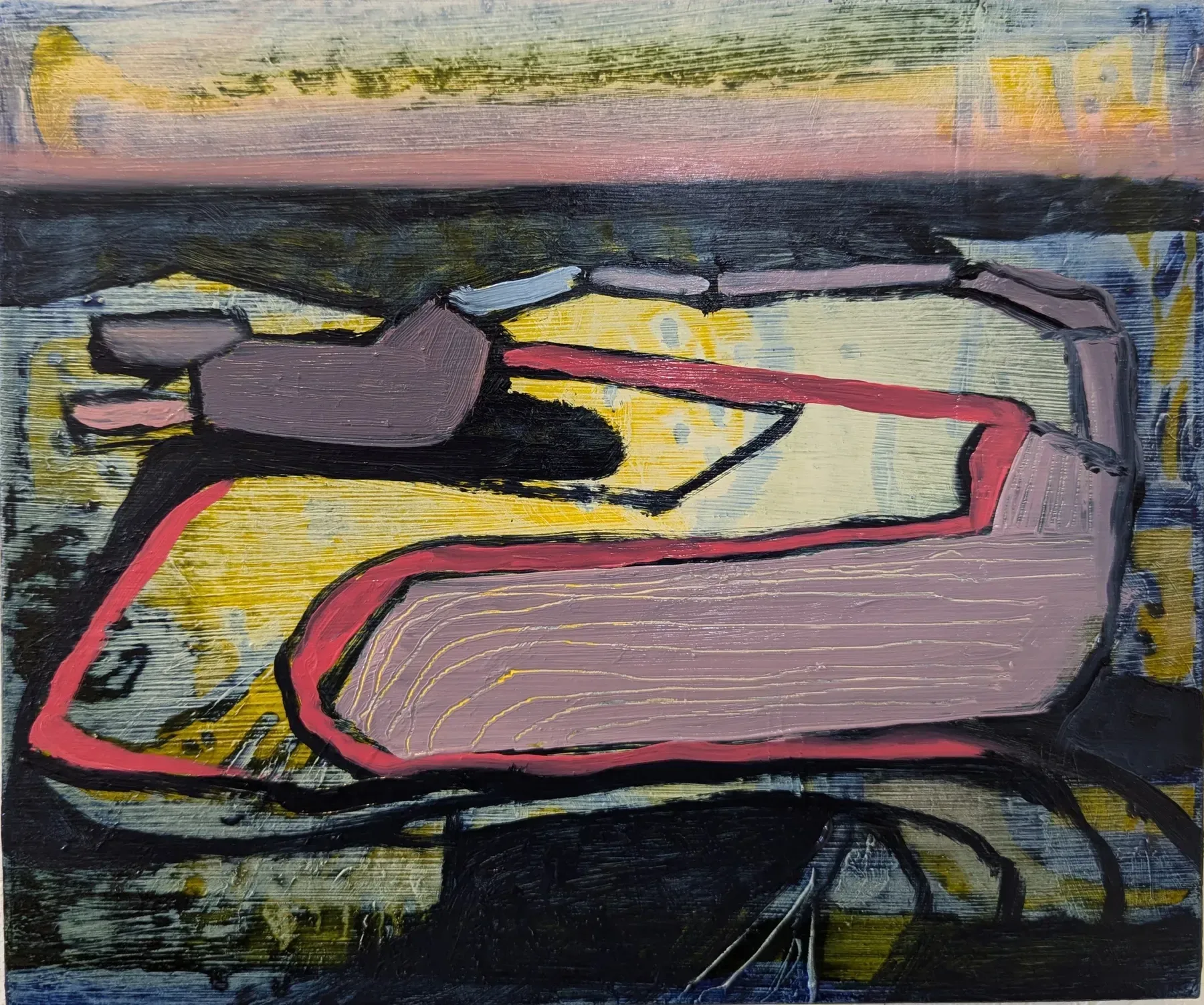Highlights: 7 - 13 October, 2024

unknown bounty, draft, (. . .), 2024 by Dorothy Hunter
New Art Highlights includes: Dorothy Hunter, olivia hicks, Charlie Barlow and Peter Driver
unknown bounty, draft, (. . .), 2024
Dorothy Hunter

Created as part of Strata, a three-person show at CCA Derry-Londonderry, these friezes are inspired by the plaster rococo adornment of palladian stately homes. These two architectural principles married in Ireland, to create ordered, symmetrical re-presentations of natural splendour on interior walls. Drawing from the plaster decoration of Florencecourt (home to the 3rd Earl of Enniskillen who invited this land's first documented underground exploration), the work explores inherited dominion, material symmetries of calcite, and representation of agricultural land and its murky anarchy in underground space.
unknown bounty (2024), plaster, rope, iron powder, bone, wood, paint, moonmilk (responsibly sourced).
(. . .) 2024 plaster, moonmilk.
draft (2024), linen, clay, calcite.
Photography courtesy of CCA Derry Londonderry, all photos by Paola Bernardelli.
Exodus, 2023
olivia hicks

A pen and ink drawing on watercolour paper - a drawing concerning ideas of nocturnal flying, the domestic, having to flee a situation without much to hold onto, vulnerability, the human form, chaos, escape and hope. I wanted to look at ideas around the materiality of a domestic object like a rug as both potential magical items(the flying carpet) and everyday items(rug/ doormat) and the connotations in relation to women/ women’s work that holds. There are also female deities with symbolism in the work like harpies, sirens and goddesses of flight.
59 X 84cm
Freight Architecture, 2023 - 2024
Charlie Barlow

Freight Architecture explores the relationship between Felixstowe and Rotterdam ports.
Charlie re-maps Rotterdam, a city with the largest port in Europe dating back to the 15th Century, and Felixstowe, a town with the first purpose built container port in the UK handling 49% of deep-sea container trade, founded in 1875. Loose boundary edges and topographical lines are drawn with electrical tape onto the wall and window which spill onto the floor. These are overlayed with composite architectural structures made from found objects; a dashed road with an overfilled vehicle joins the two cities. Miniature infrastructure scenes and happenings in urban life unfold across the space.
The traditional map - an authoritative delineation of land - is playfully reconstructed by fluid lines de-colonising space and defying port privatisation. Unlike a flat drawn surface, the use of material blurs two-dimensional and three-dimensional forms. Scattered pieces of broken painting, initially created in response to experiencing Rotterdam, are stuck to plastic scraps; these are placed amid identifiable objects creating an interplay between the abstract and representational. The installation is not static; it evolves over time as new elements are added, becoming a living map that responds to the ongoing relational dynamic between the environment, memory, history, intuition and imagination.
On each island lies mechanical cranes, monstrous creatures looming over land and sea, and micro-miniature birds, untamed beings peering at twisted angles. Birds colonise unexpected areas in the changing environment and cranes are actors in the freight exchange, passively controlling what comes and goes. Drawings next to the installation show metal structures and feathered necks, detailing how both subjects stretch out in order to see; a search for urban biodiversity. Quicker sketches capture freight movements and port infrastructure during boat journeys in Rotterdam and Felixstowe.
Visiting Rotterdam, cranes can be seen perching with hanging plastic fragments and fired ceramic forms. Plasticine, a child-friendly material made using petroleum, is used as a base for these and to position many of the objects. Map push pins are squished into plasticine turning into buttons, and the ground, becoming brightly coloured people; paper clips support the wire structures. Spreading into a construction site, piles of raw materials including salt, sugar and sand emerge amid a leaking tyre of black treacle crude oil nearby spilt Innocent Smoothie from the ‘the Blender’ factory. There is a sense of flux as vehicles zoom across roads and roundabouts towards the dishcloth quarantine area, plant trees, a pink windmill, a scrap metal spider, a peg eared rabbit, orange bridges, evolving lego neighbourhoods and new electric monuments with flashing lights. As birds dance amongst the city, 24,000Kg freight ships and fishing boats with captured yield escape and an alien spaceship invades the space. The sea monster remains hidden.
The installation also incorporates references to specific locations and events. In the Rotterdam island, diggers are rebuilding communities in response to the gentrification of the Wielewaal area in Rotterdam, where immigrant communities are being displaced by new developments. This theme of displacement is echoed in the Felixstowe island, where large rocks point to the remains of Landguard fort, evoking memories of historical events, including the Dutch invasion at Landguard Fort in 1667.
In Felixstowe, a seaside town dribbles onto the floor in blue tape with rippled water movements forming the edge. A stony shore holds memories of Summer holiday makers as a spade lighthouse shines with a red beam and birds are gathering on the water-logged pier; further cranes can be seen. Things are placed on both sides of the window; as the hot sun beams through, some elements slide down. When a gust of wind enters through the gallery door, windmills act as wind turbines, gently spinning in the breeze, as a speed boat's foil water splash flutters. Stepping away from the islands, the viewer is able to gain a sense of perspective and position in the world, akin to the profound experience of looking into the expansive ocean.
Firth of Fifth, 2024
Peter Driver

Oil on board
20 X 24cm
Artists
Dorothy Hunter , olivia hicks , Charlie Barlow , Peter Driver
Tags, Topics, Artforms, Themes and Contexts, Formats
Share this article
Helping Artists Keep Going
Axis is an artist-led charity supporting contemporary visual artists with resources, connection, and visibility.


